Parachuted priests, wiretaps in Vatican chambers, the strongest radio transmitter in the world ... The Vatican intelligence service did not exist officially. And unofficially? She was doing really well!
Specifically, there is no Vatican intelligence service. Even so, the Church had intelligence agents - members of the clergy - who filed reports. Analyzing these reports for the purposes of making decisions, the Vatican passed them through an "intelligence sieve".
The Pope's associates then assigned "intelligence missions" to both clergy and lay agents. Since the Vatican had intelligence agents, analysts, reports and missions, the pope had a de facto intelligence service - SS officer Albert Hartl wrote in the report on the new Pope Pius XII.
He writes about how that Vatican intelligence operated and what equipment it used in the book, which has just been published, "The Church of Spies. The Pope's secret war with Hitler ”American historian Mark Riebling. Certain gadgets and methods of operation of papal spies would not be ashamed of 007 himself!
The Vatican Tapes
When Pius XII invited four cardinals from Germany to an audience, he expected to obtain important information from them about the situation of the Church in the Third Reich and the attitude of Catholics to Nazism. As the Holy Father did not trust one of the arrivals - the Primate of Vienna, Card. Theodor Innitzer, who openly supported the Nazis - decided to secretly ... record the meeting .
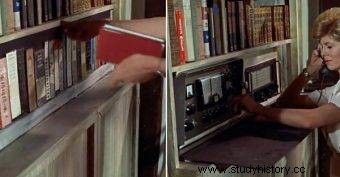
The Pope's undercover agents might not have had the Q lab-firing pens in the James Bond movies, but eavesdropping or a radio hiding in the books wouldn't be a freak to them. Still from the movie "Dr No", 1962.
Word for word was to help him dispel any doubts as to the true intentions and views of his guests. For this purpose, at the beginning of his pontificate equipped his library with a spy sound recording system u - we read in the "Church of spies". The technical side of the project was taken care of by the inventor of the radio receiver, Guglielmo Marconi.
Spy equipment for marriage annulment
Marconi had previously worked for the Church, installing the latest communications technology in Vatican buildings for free:a telephone exchange, a radio station, and a radio link to the papal summer villa. In return, he received ... annulment of his marriage to his Irish wife, Beatrice O'Brien, and consent to remarry.
Several people related to the inventor still worked for the Vatican. In official church documents, their responsibilities are defined as recording the pope's speeches and "performing special tasks" ie… eavesdropping on his visitors.
Library drill
How was it practically? Private audiences of the Holy Father were held at the Pontifical Library. Adjacent to it was two rooms where the eavesdropping technicians worked . The night before the meeting with the German cardinals, a special working team drilled a hole in the library wall so that the microphone on the cable could be pulled through it.
To avoid noise, hand drills were used. For additional calming, they were poured with olive oil. Except that the drills were warming up, so the smell of burnt oil spread over the room ... To remove it, the door to the Courtyard of the Parrot - Cortile del Pappagallo was opened.
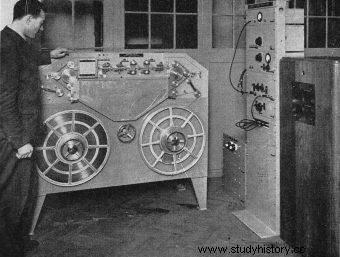
Marconi-Stille tape recorder at the BBC studio in 1937. Steel tape recorders based on Marconi technology were used until the 1940s
After several hours of drilling, the workers managed to break into the library. A condenser microphone in the shape of a nipple on the cable was pulled through the opening and hidden among the books. The microphone was connected to a portable preamplifier, resembling a brown leather briefcase to disguise it. The preamplifier featured cables running through a tunnel under an oak grove in the gardens of the Vatican. The cables went to the 9th century tower.
The steel band will cut the head off
There, trained Jesuits operated the Marconi-Stille system tape recorder , about the size of the cabinet. The sound was recorded in it on a steel band 3 millimeters wide, moving at a speed of 1.5 meters per second. A half-hour recording used three kilometers of reel of tape.
The tape was called the "traveling blade" because if it broke it could seriously injure and even kill people in the vicinity. She would have cut off their heads without a problem ... So the tape recorder worked in a closed room, and the Jesuits operated it from a distance from the next room.
The Pope's conversation with the German cardinals on March 6 (and the second one three days later) was taped and transcribed, and Mark Riebling used its transcription when writing his book.
Courier hunt
To maintain his influence over the Nazi-attacked Church in Nazi Germany, the pope needed an independent communication channel. To this end, an envoy of the Vatican was to come to Berlin every week incognito to convey papal orders to German bishops. A separate network was to ensure the internal connectivity of the Church in the Third Reich.
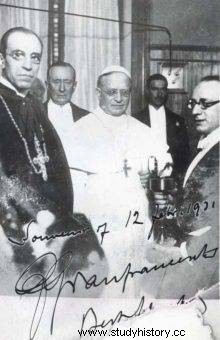
Inauguration of the Vatican Radio in 1931, in the center Pius XI, on the left Cardinal Eugenio Pacelli (later Pius XII), between them Guglielmo Marconi
Another courier was supposed to travel on the route:Berlin - Munich - Freiburg - Cologne - Berlin. At the point of contact, materials were left for Rome, and from there they were to be handed over to the first courier. Vatican agents had to be careful of Sicherheitsdienst officers pursuing them (SD), that is, the security services of the SS.
The strongest transmitter in the world
Fast and safe delivery of correspondence was one of the Vatican's main concerns. For a long time, the papal services have used various modern solutions and devices. In the 16th century, this was an innovative information coding. A memory key was used, according to which letters of the alphabet were properly mixed. Later this method was used by secular services.
During the Reformation, the Holy See's semaphore system sent information across Europe, from one mountain peak to another, by day with mirrors and by night by light. In turn, in the 1930s, radio communication was introduced. a radio tower was erected in the Vatican gardens, which was then the strongest transmitter in the world. It was called "the finger of the pope."
Secret reports in briefcase
To transmit information from Nazi Germany, the Vatican services also used more traditional methods, i.e. the mediation of trusted people. One of the Vatican's most valuable collaborators, Munich lawyer Josef Müller, flew small sports planes from Germany to Italy by delivering letters to Merano.
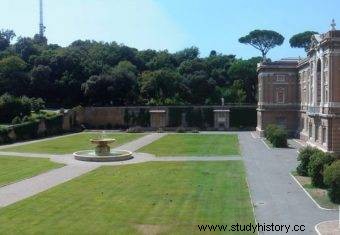
On the initiative of Pius XII, a radio tower was erected in the Vatican gardens, which was then the strongest transmitter in the world. One of the successors to Marconi's antenna can be seen in the background of the contemporary photo.
There he passed them on to the person who took them to the Vatican. Müller hid the most important reports among completely innocent church documents. For the sake of ignorance, he put letters in twenty or more slots in his briefcase and tossed it into the airplane cockpit.
Manuscript Shelters
The Vatican also applied modern solutions in other areas. When Germany invaded the Netherlands and Belgium, Pope Pius XII expressed open sympathy for the victims. It made Mussolini and his people furious. Duce has stated that he can conquer the Holy See whenever he wishes.
In such a situation, the Vatican police created a civilian special unit to perform counterintelligence tasks. The Swiss Guard equipped themselves with gas masks and automatic pistols , and Vatican engineers began constructing bomb shelters and a steel-armored room to protect rare books and manuscripts.
Parachute priest
The Vatican services also struggled with another country hostile to the Church - the Soviet Union. In 1929, Pope Pius XI established a new structure in the Vatican secret service. The candidates selected for it were to be fluent in the Russian language, knowledge of Russian history, culture and cuisine, as well as ... in parachuting.
For these are trained priests to be parachuted in the USSR and to establish secret parishes there . The Vatican used contacts with Poland to transfer priests to the Soviets. Unfortunately, most of the clergy transferred there were quickly caught by the Soviet services.
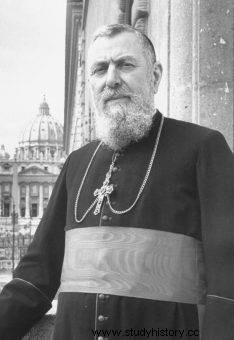
The Vatican also tried to have its people in the Soviet Union. Priests were to be parachuted in the USSR and establish secret parishes there. In the photo, Cardinal Eugène Tisserant, the prefect of the Congregation for the Eastern Churches, created a plan that Catholic priests would move in disguise as German troops deep into Russia. Ultimately, the plan had disastrous results…
A specific continuation of this action was the plan developed by the prefect of the Congregation for Eastern Churches, Card. Eugène Tisserant after the German attack on the USSR. He predicted that Catholic priests would advance into Russia under the guise of German troops.
In designated places, they were to establish contact with residents and create underground parishes. The Tisserant Plan was one of the Vatican's greatest actions, but it was not a success. The priests sent to Russia were persecuted by both the Germans and the Soviets. At least two hundred and sixteen clergymen died that way.
Bibliography:
- Riebling Mark, Spy Church. The Pope's secret war with Hitler , Wydawnictwo Literackie, Krakow 2016.
- Kurzman Dan, Special mission. Hitler's plan to seize the Vatican and kidnap the Pope , Rebis Publishing House, Warsaw 2008.
- Alvarez David, The history of espionage in the Vatican , Ravi Publishing House, Łódź 2004.
